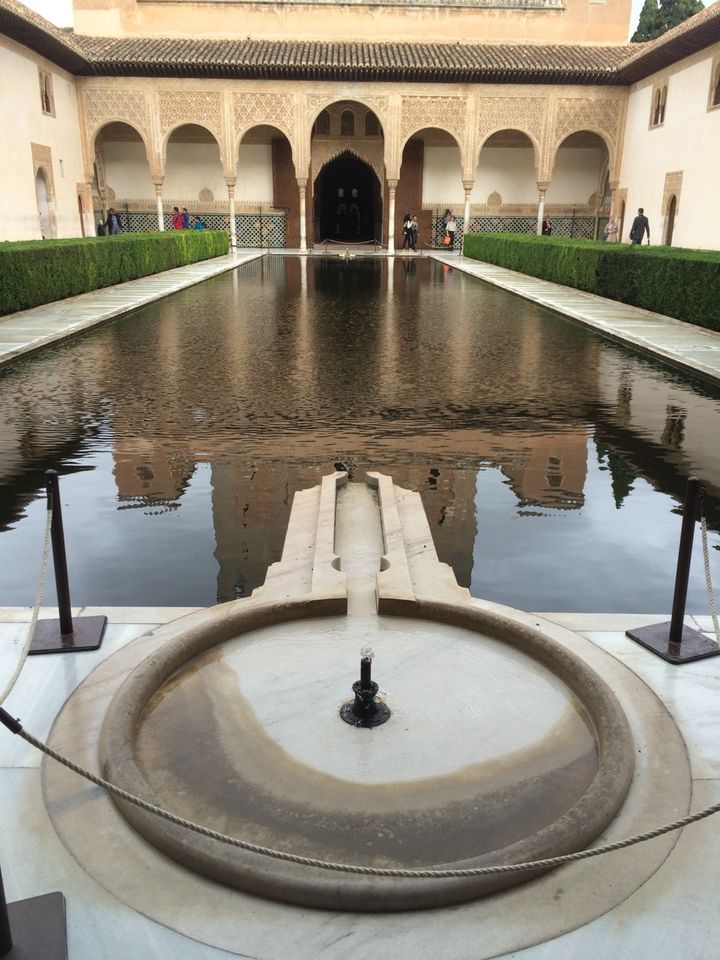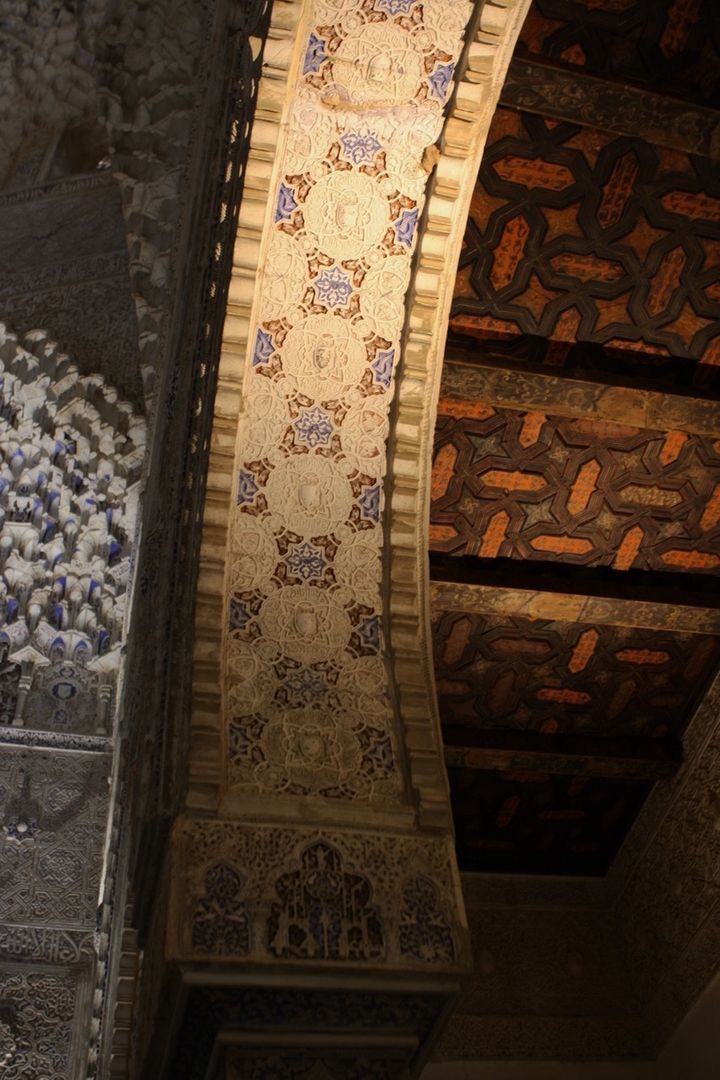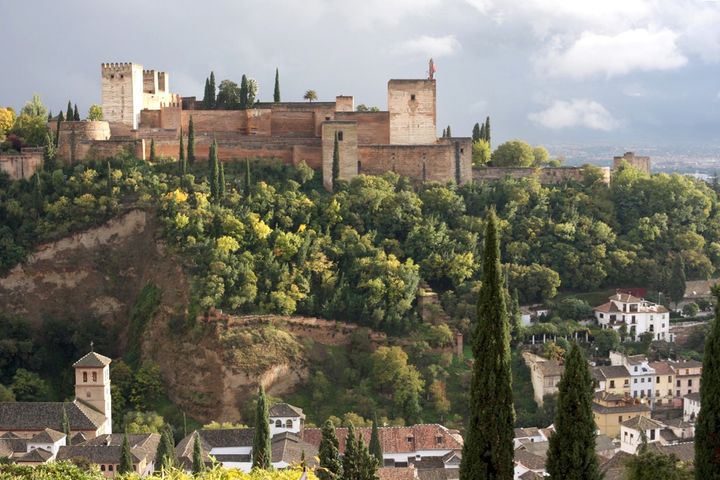
Many travelers consider a visit to Granada’s Alhambra as the pilgrimage of a lifetime. The compound of Moorish palaces is legend––its fame set in literal stone by the poet Asís de Icaza. He mused about a blind man visiting, and then wrote:
“Give him alms, woman, for there is nothing sadder in life than being blind in Granada.”
The words can be found on a brick wall within Alhambra, etched into stone slabs. Asís de Icaza was correct: Alhambra, located at the base of the Sierra Nevada mountains, is simply spectacular.
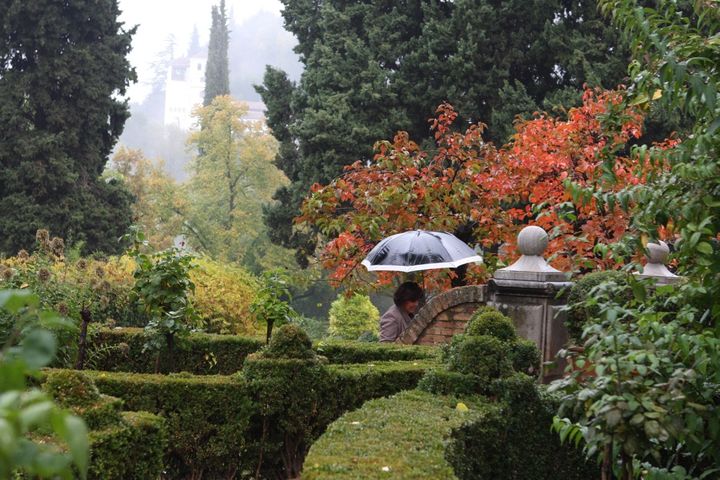
The medieval palace and grounds encapsulates the whole of Moorish Spain in one neat package. If you’re able to make just one stop in Andalusia, Granada’s Alhambra should be it.
The palaces are sturdy, befitting the kings of Granada––the Nasrid Dynasty, the last of Arab rule in Spain. And yet the interior rooms are studies in intimacy and even fragility, given the intricate ornamentation.
The UNESCO World Heritage Site began as a fortress in 889 AD, built over Roman ruins. The small structure had no great significance until the mid-13 century when the Emirate of Granada launched a building frenzy. The Moorish reign at Alhambra lasted less than 150 years. The Christian Reconquista won the complex for Ferdinand and Isabella by 1492.
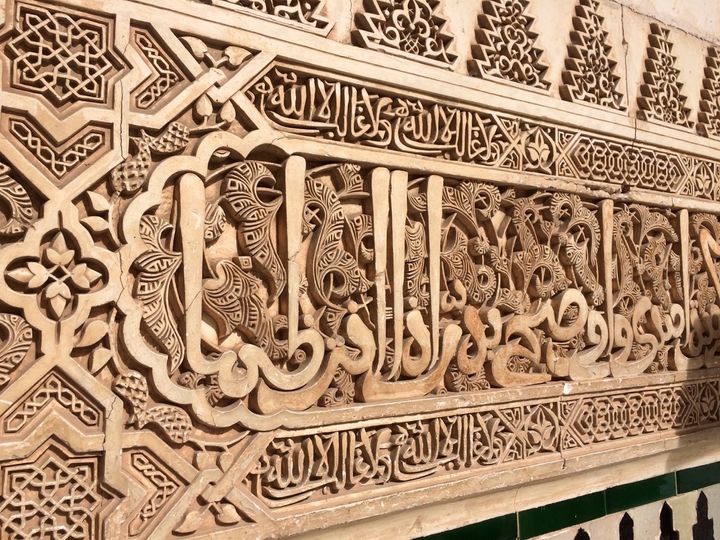
Calligraphy is scrolled, etched and plastered onto nearly every form in Alhambra, transforming the palaces into decorative wonders. The inscriptions number 10,000, and pay adulation and homage to Allah. Arabesques honor various sultans. Much of the ornamentation was covered over after the Reconquista, but the last century has seen major renovations.
The cumulative effect of eight centuries of Muslim rule is found in Alhambra's embellishments: horseshoe arches, and muqarnas (complex dome and ceiling styles), among others.
Entire walls of ceramic tile are common here, intricate with geometric Islamic designs. The tile walls help cool the palaces, but moreover, they are stunning works of art.

Various rooms and courts are laid out in a wandering floor plan: the Hall of the Ambassadors, the Court of the Lions, the Hall of the Abencerrajes, and others.
After ten years of restoration, the Court of the Lions now nearly glows with clean marble. The circle of 12 lions that wreath a central alabaster basin were blackened before the restoration. During Alhambra’s height, each lion spouted water from its mouth––and thanks to the extensive renovation, they still do.
Alhambra’s hydraulic works were ingenious mechanical systems, feeding a system of fountains and drinking stations. Free flowing water paired with gardens and the commanding architecture signaled what lie after death: paradise.
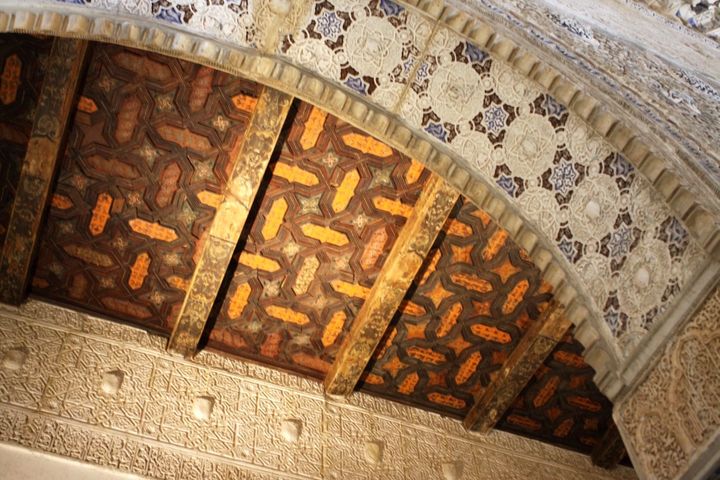
Christian art freely mixes with Islamic art within Alhambra’s walls. And Spain’s national motto Plus Ultra, is found on walls, and stamped onto the wood ceiling in the Charles V palace. From the Latin, non plus ultra: nothing further beyond.
Soaring domes decorated with countless tiles are found throughout the palace––the most notable within the Hall of the two Sisters. A dome is segmented into over 5000 small prisms or tiny vaults, a complex mathematical design termed stalactite vaulting.
The Hall of the Ambassadors, also known as the Throne Room, is Alhambra's largest structure. The room’s dome and ceiling is constructed from 8017 panes of cedar coated in various colors. The design, which also includes white stars, represents Paradise’s seven heavens.
––––––––––––––––––––––––––––––––
Where to stay
Within its walls, Alhambra harbors one of Spain premier Paradores de Turismo, historical sites that have been converted into hotels. The parador is a former 15th century Franciscan monastery, transformed into a hotel in 1942.
More information
Follow R. Daniel Foster on Twitter
